Personally, I, when for the first time I heard a word - a porcelain stoneware, some stupor fell. As a builder with experience, and a person with an analytic warehouse of the mind, I understand what is ceramics, and what is granite, but how they can meet in one concept, the brain refuses to perceive.
Later I figured out, it turned out everything is very simple and understandable, that is why I decided to start this conversation.
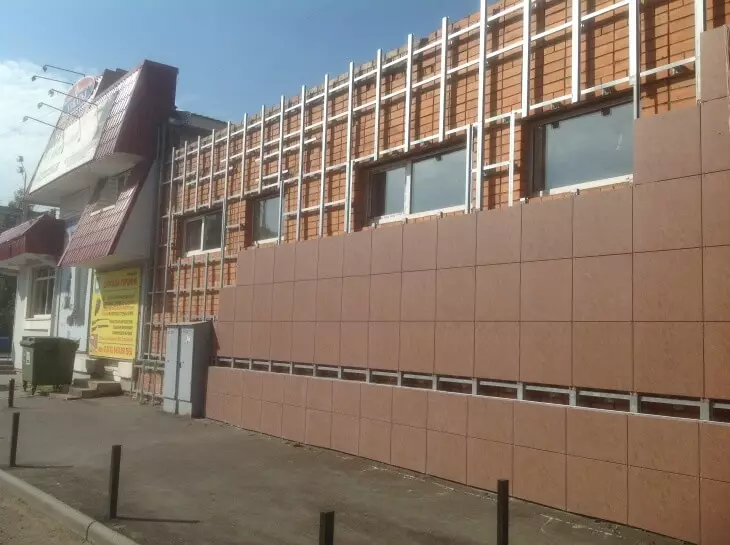
Most often, porcelain stoneware can be found on the walls of buildings or in the interior decoration
What is ceramographic
Most often, porcelain stoneware today can be found on the walls of buildings or in the interior decoration. In fact, it is a tile of a certain size with a smooth glossy surface. But unlike simple ceramics, it has a pronounced structure of the stone, it may be granite of various colors or even marble with characteristic veins.
Of course, marble walls look rich and solid, but in nature this stone is very fragile, and any more solid subject can scratch it. In addition, the process of mining and processing of natural stone is very complex, one thing is to simply develop a breed, and completely different to cut it onto flat plates and polluate to glossy glitter.
That is why the production of ceramographic was developed, this material not only received higher qualitative characteristics, but also significantly decreased the price compared to natural analogues.
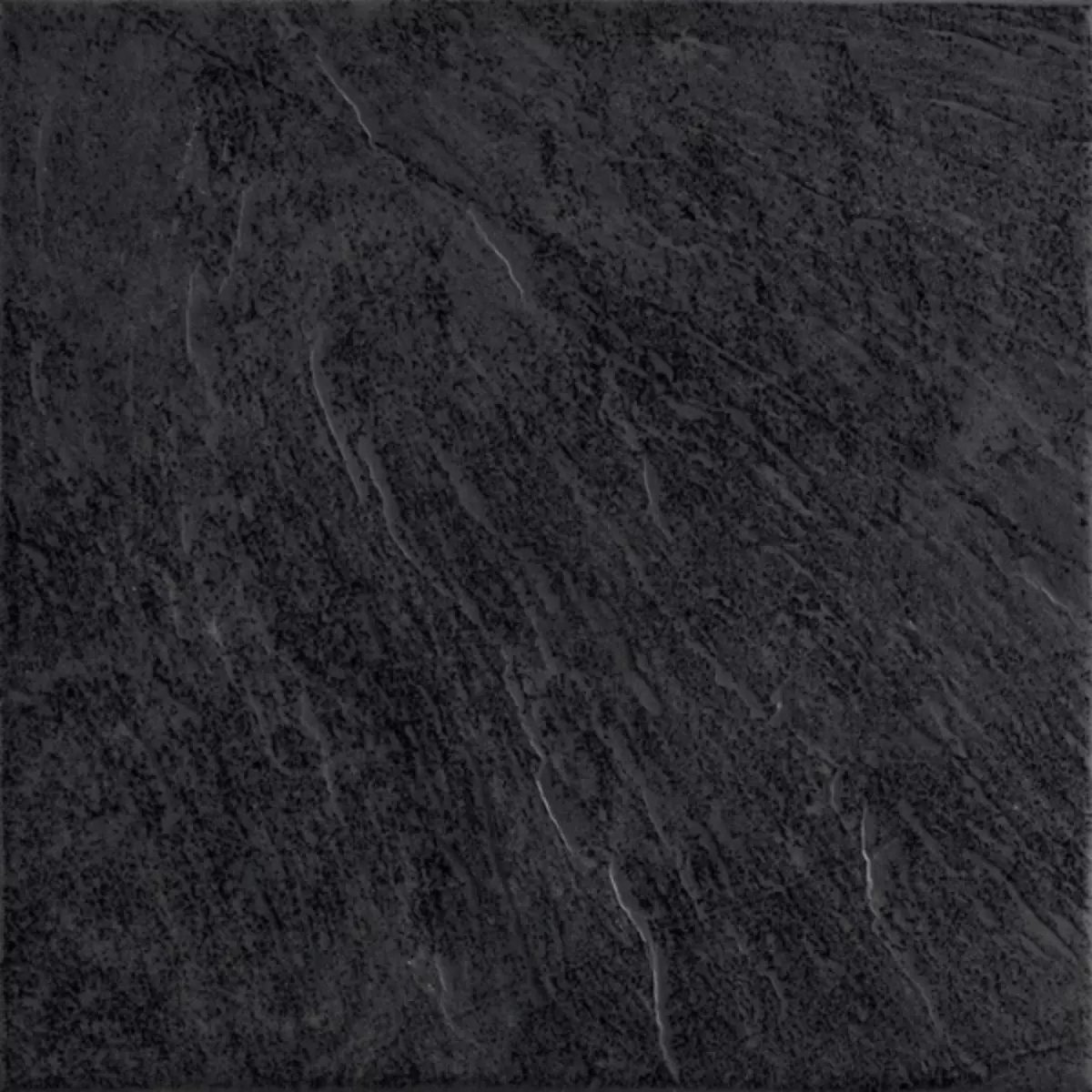
In essence, this is a tile of a certain size with a smooth glossy surface.
How to produce ceramographic
The whole process differs little from the production of simple ceramic tile, with the only difference that the large percentage of granite crumb adds to the red clay, it is it gives the texture a characteristic natural stone.
The proportional ratio of granite and ceramics, different manufacturers are different, which often affects the final value of the product. As a result of the primary firing, a monolithic plate is obtained, which looks like a stone, but having the strength of ceramics. It is the percentage ratio of clay to the stone crumb to affect the final quality.
Since the firing ceramics occurs at a temperature of 900 degrees, granite does not enter into any reactions and serves only as a binding and decorative component. The more in the composition, the more beautiful it is products, but the lower its technical characteristics.
After the primary firing, the stove of porcelain is covered with icing and goes back to the furnace, where already at a temperature of 1100-1400 degrees, the upper coating occurs, and it turns into a glass. Thus, it turns out a glossy, perfectly smooth plate, looking like natural granite.
Article on the topic: Circular Couple do it yourself: device
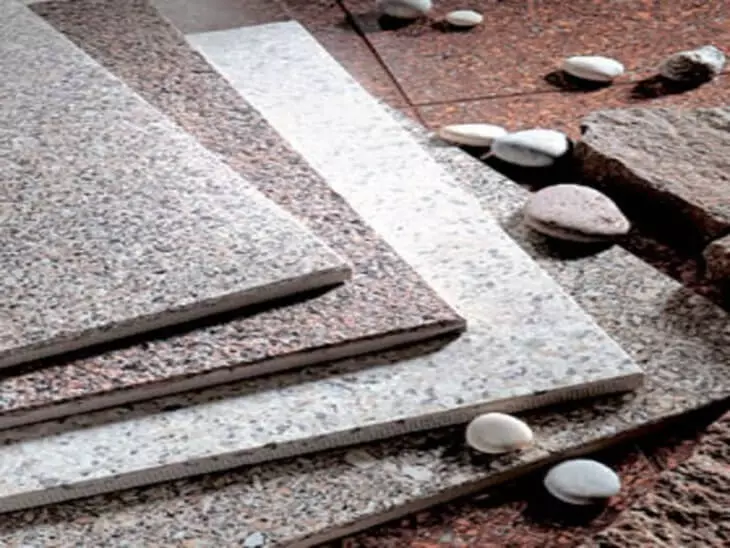
Thus, it turns out a glossy, perfectly smooth plate, looking like natural granite.
Pros and cons of porcelain stoneware on the walls
Specifications allow you to use porcelain stoneware for walls both outside and indoors. That is why builders and customers prefer him, choosing universal finishing material.
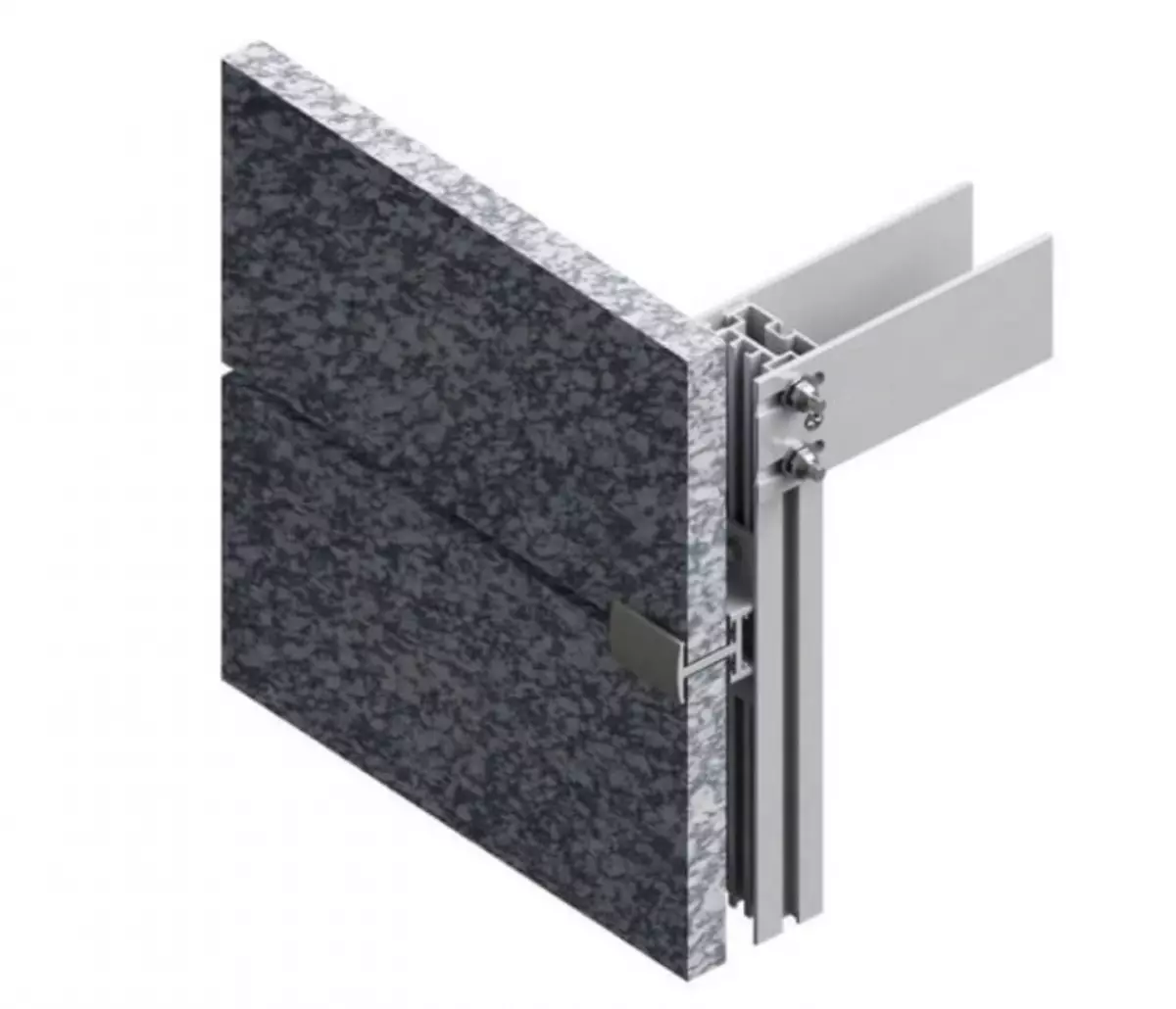
The whole process differs little from the production of simple ceramic tiles
Pros:
- Porcelain stoneware - high strength material. It is very difficult to damage or split after it is installed.
- The installation of porcelain stoneware on the facade creates additional sound and thermal insulation.
- This material is completely resistant to any natural impact. Porcelain stoneware water, sun and even sharp temperature differences.
- Porcelain stoneware is resistant to all known types of solvents both acidic and alkaline.
- Fireproof. Porcelain stoneware not only does not support combustion, but also prevents the spread of fire, as it has high heat-resistant characteristics.
- Environmentally safe and does not cause any harm to health. All materials in the composition of the porcelain stoneware of natural origin and the process of production does not use chemical additives and reagents.
- To use porcelain stoneware in the wall decoration, it is not required, additional processing and protection. The material is immediately ready for use.
- He does not require special and regular care. The plates on the wall are easy enough to wash with water, and if necessary and strong detergents.
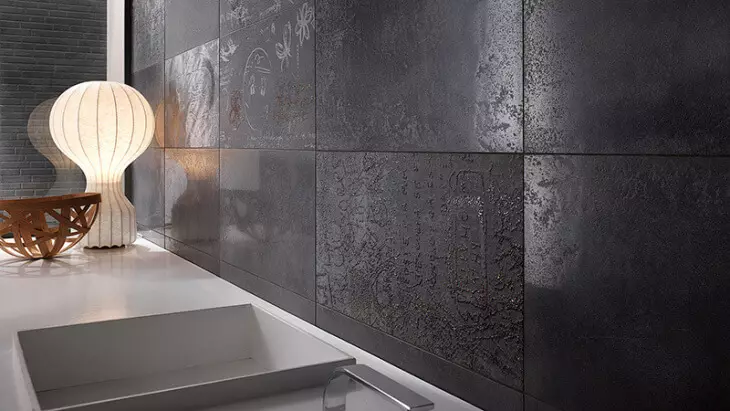
Specifications allow you to use porcelain stonewares for walls both outside and indoors
Important! Like any product of ceramics, porcelain tensum has high gap strength and withstand pressure on the surface. But at the same time, each individual tile is very fragile and easily splits when dropping or strong impact.
Minuses:
- Installation of porcelain stoneware can be produced in three ways, but despite this, each of them is technically complicated and requires certain skills in construction or repair.
- Compared to other facade systems, porcelain stonewares from the most expensive finishing materials.
- Unlike natural stone, which can be grinding, the porcelain stoneware cannot be renovated and in the event of damage it will be necessary to replace the tile.
- Porcelain stoneware is difficult to handle and cut. This requires special saws and fixtures.
- It has a lot of weight. Facades from porcelain stoneware create an additional load on the walls and it is necessary to take into account when choosing this material.
Article on the topic: The heat-resistant paint for painting a mangaal with their own hands
Methods of mounting porcelain stoneware on the wall
As I said above, it can be attached to the wall of the wall in the wall in three ways, and the choice depends on the design and technical features of the building.Installation of porcelain stoneware
The easiest way to install on the wall, used mainly indoors. Porcelain stoneware glued to special glue through the composition resembling tile, but containing additional strengtheners designed for the weight of the porcelain tile.
Using such a method of installation and on the facades, but only in cases where the building and walls do not need additional insulation.
Tip! It is unnecessary to save on the adhesive mixture. Porcelain stoneware material that requires specific glue solutions to hold onto the wall.
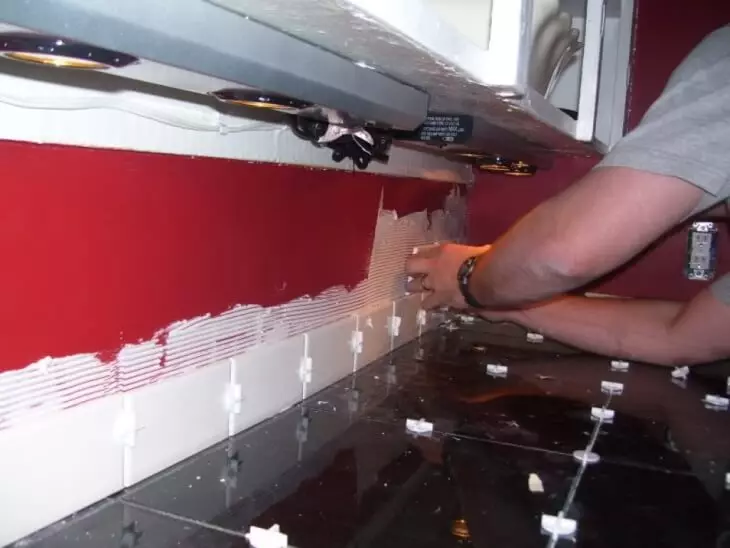
Porcelain stonework is glued to special glue in composition resembling tile
Ventilated facade of porcelain stoves
The system at which the porcelain is not attached to the wall, but on special klymer holders. They are fixed to the metal guide installed on the facade.
This is the fastest and most reliable method of installing porcelain stoneware, and its main advantage is that there is a layer between the plates and the wall, which allows the air to circulate freely under the facade and does not allow the condensate.
If it is necessary, the emptiness in the wall is filled with insulation, which is paired with porcelain stoneware, create reliable protection of the building and significantly reduce heating costs.
Important! The system of the ventilated facade of porcelain stoneware is a complex design that requires certain skills in the installation and set of the tool. Machine independently, even on a small area is extremely undesirable.
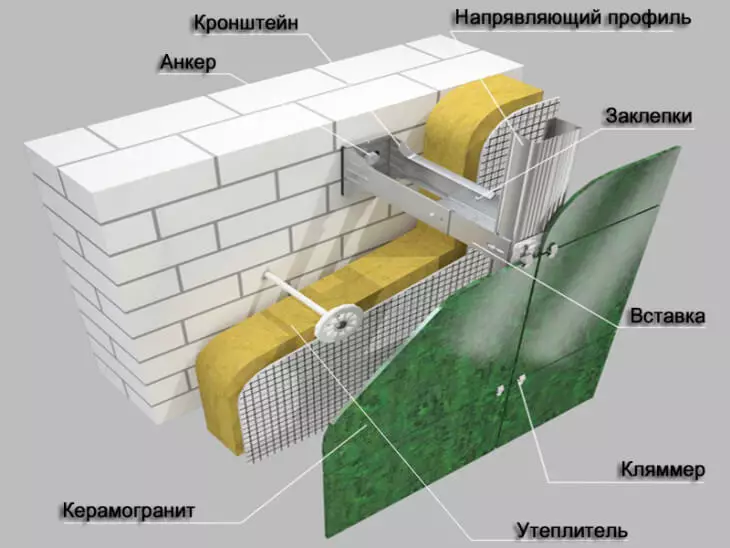
Ventilated facade of porcelain stoves
Hidden fastening of porcelain stoneware on the wall
In essence, this is the same technology as the ventilated facade, with the only difference, which kleimers hold on the wall of the porcelain plate not for the front part, and for the grooves-soaked in the ends.
This is the most time consuming and, accordingly, an expensive way to install on the walls and is rarely used on commercial buildings. The hidden fastening is more relevant for private construction, where the aesthetic component is one of the most important aspects when finishing facades.
Article on the topic: Tile for the kitchen on apron: expert recommendations
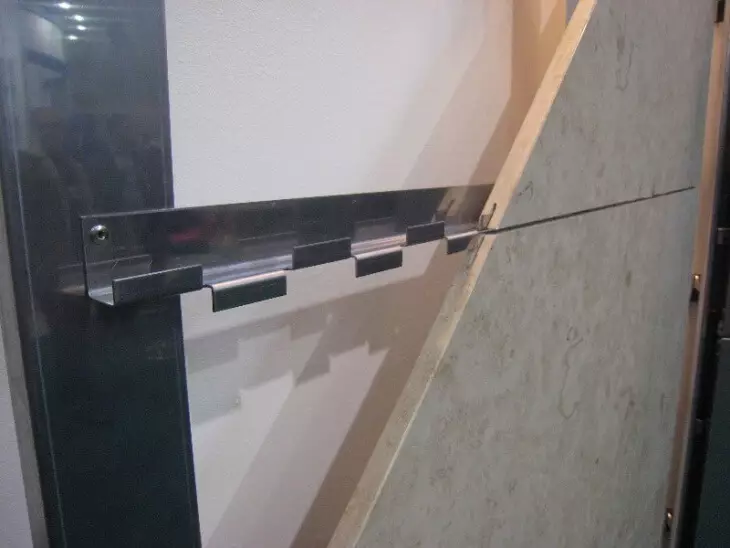
Hidden fastening of porcelain stoneware on the wall
The machine with a diamond saw cuts into the ends of the porcelain plate thin grooves in which the kleimer is inserted. So how to do it yourself, the installation process becomes longer and the appearance of marriage is not excluded, that is, cracked or sealing plates.
Tip! It is very difficult to cut the porcelain stoneware, so choosing such a system of mounting on the walls, without the help of specialists can not do.
